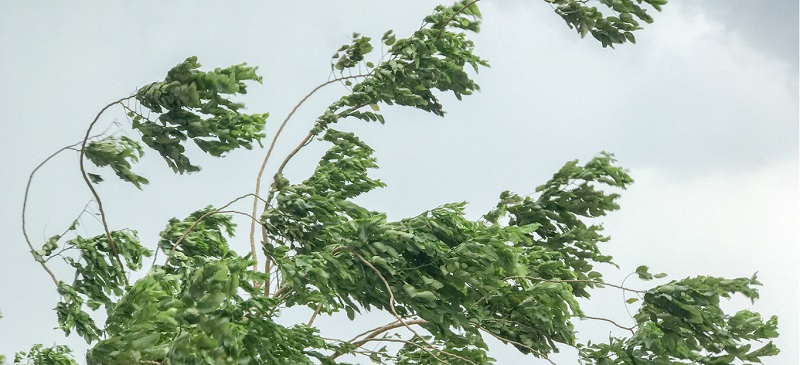‘Gone with the Wind’ was a classic 1930s book and movie, but it’s not a promising future for your plants. If they have forecast a strong storm, you will need to act quickly. Small plants are much more vulnerable than trees and shrubs, but they are also easier to protect from wind, cold, and rain. Read on to learn how to protect plants from strong winds.
How to protect plants from strong winds step by step
1. Spread a 7.5-inch layer of organic mulch over the base of the plant to protect the roots from cold weather and storms.
2. Flip pots, large bowls, glass bells, laundry baskets, and buckets over small plants to provide a physical barrier against the elements. If strong winds are expected, place a cinder block or large rock on top of them.
3. Wrap larger plants, shrubs, and vines in strong fabric so they can withstand the wind or cold. Use burlap and secure it with garden stakes around the plant. Tie the fabric with a thick string.
4. Cover a small plant bed with a thermal plant blanket to ensure protection from the cold. Weight each side of the fabric with cinder blocks or stones to prevent damage from rain.
5. Anchor a newly planted tree or shrub with three or four stakes before a windstorm. Attach the tree to the stakes with thick rope, but loosen the ties enough so that the trunk can bend several inches in the wind without breaking.
6. Wrap tree trunks in burlap and tie them with twine to protect them from cold temperatures.

7. Alternatively, wrap the entire tree to provide additional protection. Cut a piece of burlap or thermal plant blanket long enough to wrap around the tree several times. Lay the fabric on top of the sapling and wrap it over and over again, overlapping descending layers. Tie the fabric in place with the twine.
8. For added protection against the wind, use a hammer to hit the wooden supports, 30 cm higher than the tree. Wrap the fabric around the supports if you want to create a tent that surrounds the tree.
Advice to protect plants
Move potted plants to the greenhouse to protect them from storm damage. If a plant is very large or heavy, cover it in the same way that you would protect a plant that grows in soil.
If you grow fruits, grains, or vegetables, monitor the forecast daily.
Don’t risk injury when trying to protect plants during a tornado or hurricane.
Remove plant protection when the threat has passed.





